One of the most frequent questions I get from people wondering about my travels is: "What was the best place you've ever traveled?" Now, if I'm very honest, I really hate answering this question. I feel responding with one location would almost be a betrayal to the endless incredible experiences, sights, and memories I created in all the other ones. I also never know if they mean my favorite place in terms of nature, food, architecture, experiences or people. I'm not quite sure if they really know what they're looking for in an answer either. But if I was cornered in a conversation and had no choice but to declare the one most favorite place in all my travels, it would certainly have to be: Western Australia.
Nowhere else on earth have I experienced nature in such a raw, rugged and beautiful form. Here you'll find red desert cliffs that meet turquoise tropical waters teeming with underwater life, the coastline stretches for hundreds of miles and yet you hardly ever see another person anywhere in sight.
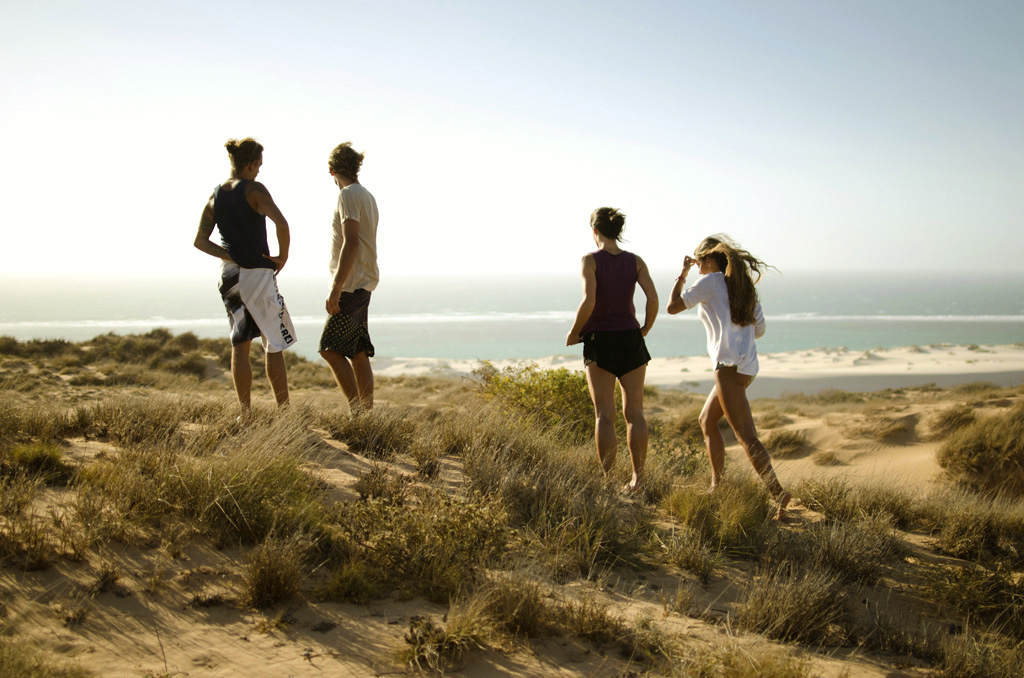 My travel buddies for the roadtrip
My travel buddies for the roadtrip
Starting the Journey
Most people will either start in Broome or Darwin and make their way down South, or begin in Perth and head up North. You can look at bulletin boards at backpacker hostels or on a website called Gumtree to find other backpackers making the trip looking to fill up their vehicle. Jumping aboard postings like these can be a quick, easy and economical way to get started on your journey. However, choosing the right group of people is really going to make or break your whole experience, especially considering it is around a 2-4,000 km journey depending on where you start and end. Make sure that everyone in the group has a similar timeframe for how long they want to spend doing the trip. Also, make sure interests match up well. If you are outdoorsy and active, perhaps it isn't the best idea to go with a group of people that want to simply perfect their tan and lounge every day at the beach.
I myself was working at a resort in Broome at the time and was lucky enough to do most of the trip together with coworkers that had a four-wheel drive vehicle.
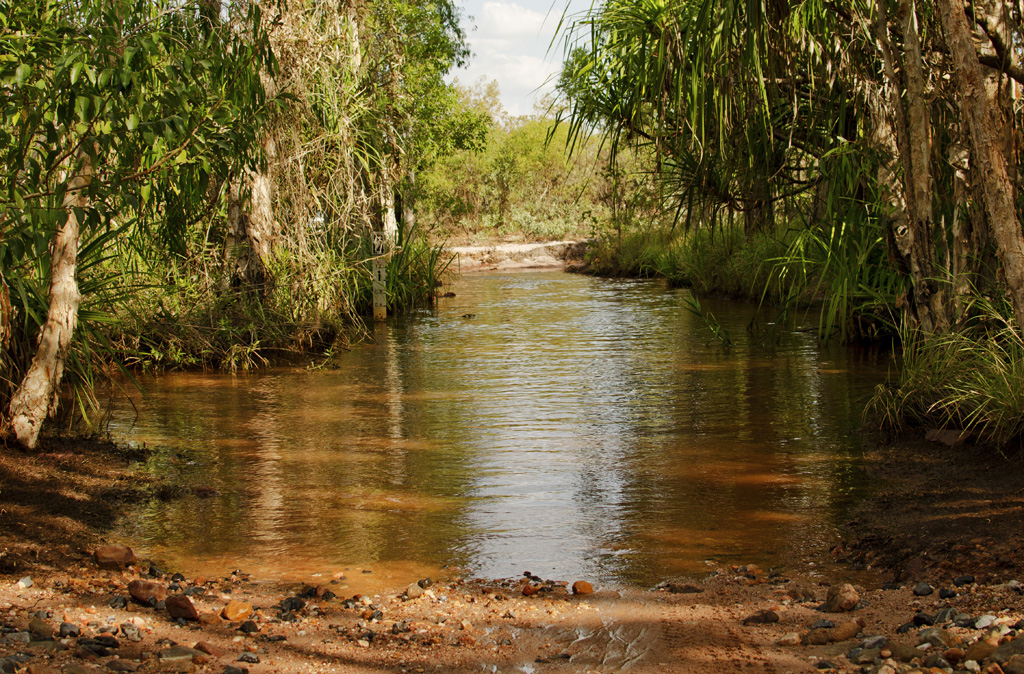 Some of the road conditions you may encounter.
Some of the road conditions you may encounter.
To 4WD or not to 4WD
I'll go ahead and say it, if you want to fully experience Western Australia, you NEED a 4WD vehicle. Find someone that has one, rent one, or buy one and sell it after. Whatever makes the most sense for your budget and timeframe. Before spending some time in Australia, I had no idea why any normal, sane person would ever need to get their hands on a gas-guzzling 4WD. What was the point, I thought. But after a few months experiencing the Northern Territory, Outback, and Western Australia, crossing over creeks, driving unsealed roads, gaining access to the most pristine, abandoned and untouched landscapes I'd ever seen in my life, my preconceptions forever changed.
A lot of the most beautiful beaches and destinations are only accessible via unsealed roads. Some of these unsealed roads are well-maintained dirt roads that you could easily take your two-wheel drive vehicle on. Others are sandy or covered in mud with big rocks jutting out from the road. You may even need a snorkel on your vehicle to cross waist high creeks.
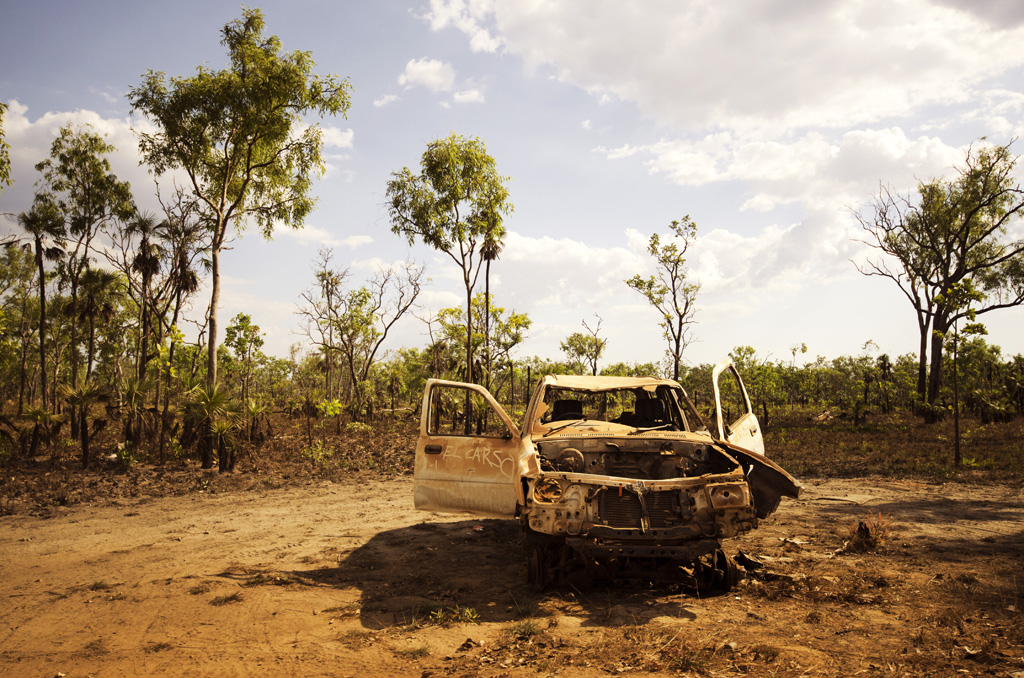 Not everyone making the journey has luck on their side.
Not everyone making the journey has luck on their side.
Now, I'm not saying you won't have an amazing time if you can only do the trip with a 2WD vehicle, because you most certainly will. Perhaps in large part, because you'll never know what you were missing out on anyway. But for me, having done the trip with a 4WD vehicle and seeing what places a 4WD vehicle gives you access to, it really is the difference between having a really nice road-trip and having a truly epic road-trip of a lifetime.
Below are a few amazing destinations to hit up along the way:
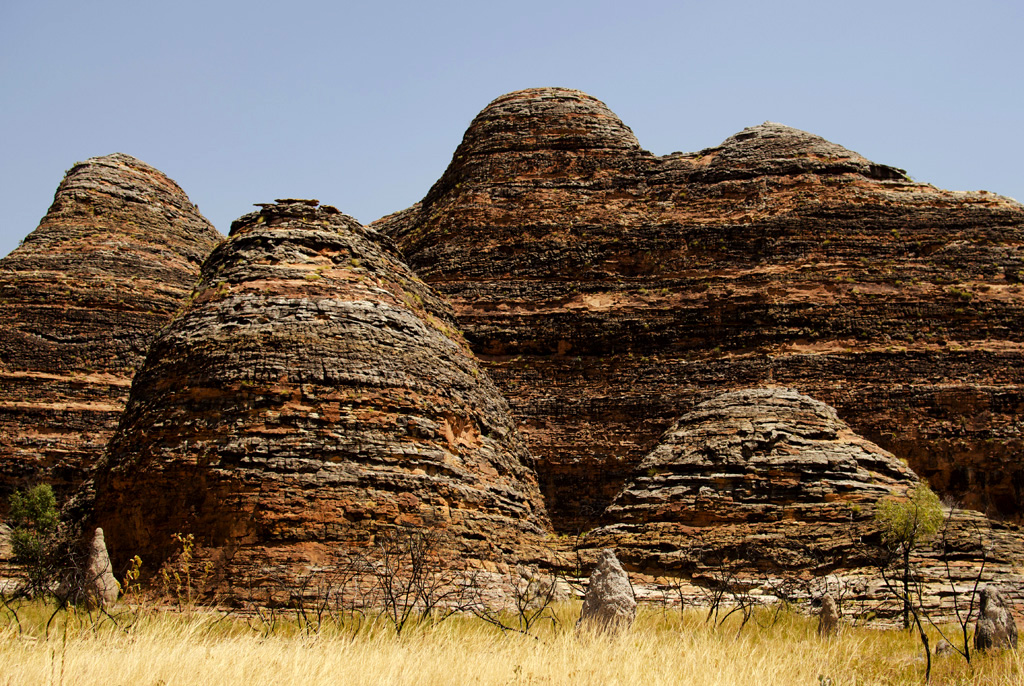 A small taste of the kind of landscapes you'll see in the Bungle Bungle Range.
A small taste of the kind of landscapes you'll see in the Bungle Bungle Range.
The Bungle Bungles
The alien landscape of honeycomb hills, found in Purnululu National Park, are a marvel unlike anything else you'll see in the world. These sandstone towers have formed overtime through weather, temperature change and algae growth that have given this mountain range its distinctive look. You'll need a 4WD vehicle to reach this national park, or be ready to hitchhike for the 30 km stretch that it takes to get there from the Highway 1 turnoff.
80 Mile Beach
This is one of the best spots in the world to witness mother sea turtles laying eggs which begins in October, or to see the little ones hatching before the month of April. I went in the beginning of January and had the chance to see a few little baby turtles sticking their heads out from the sand late at night. I waited for hours to watch them scamper into the ocean but somehow did the unthinkable and managed to fall asleep before witnessing such a magical moment. You should have seen the panic frenzy I was in when I woke up in the morning, face covered in sand, realizing what I had just missed. The rest of the group I was traveling with was ready to move on the next morning and reluctantly I went along. Till this day I still haven't gotten over having dozed off that night.
If you do have the fortune to see these amazing creatures and don't blow your chance like me, make sure to be respectful. Using lights will stress the mother as she lays, or confuse the baby turtles as they try to navigate towards the shore. Approach nesting turtles from behind, use slow movements and always keep your distance.
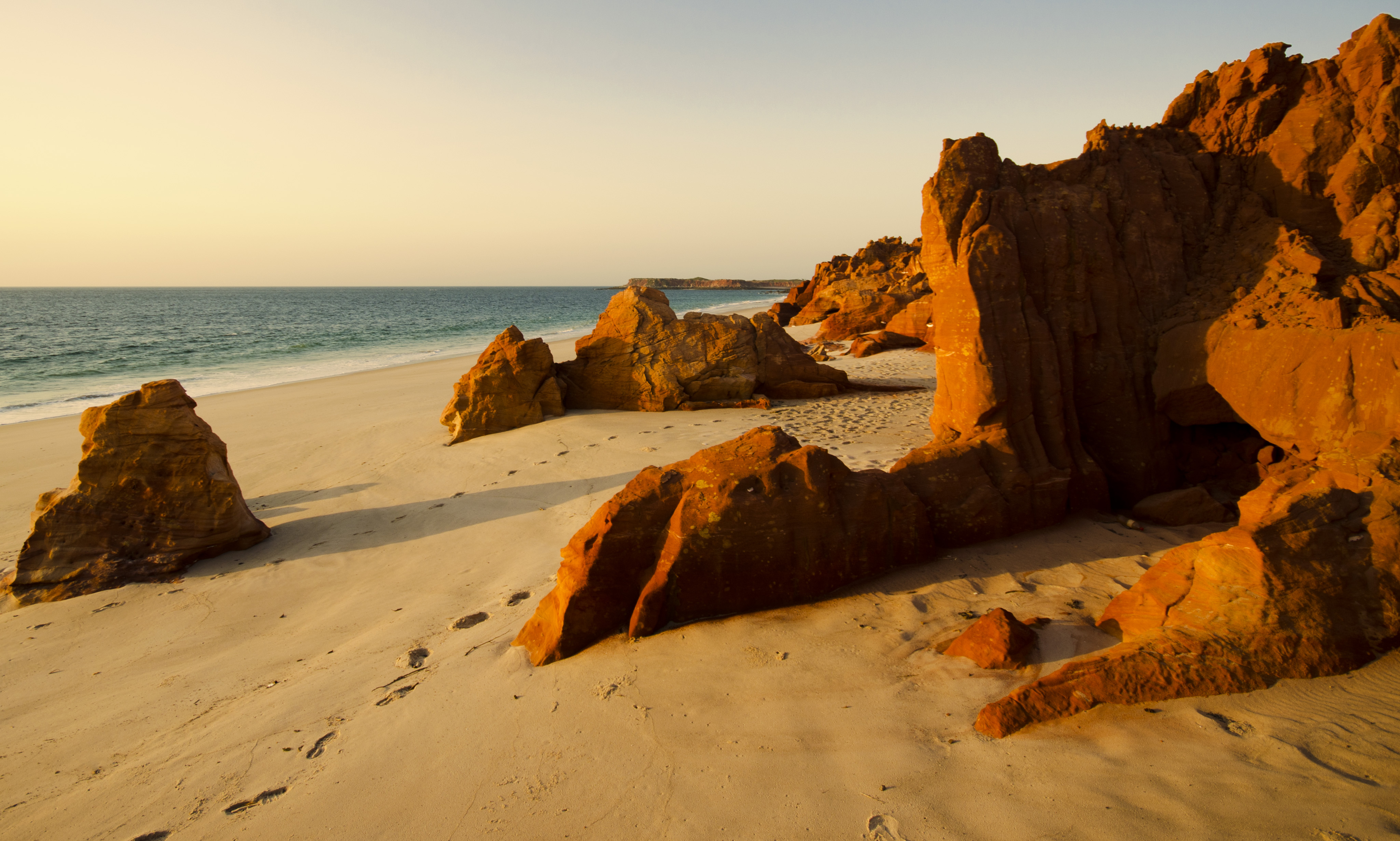 Red sandstone cliffs such as these can be seen all along the Western Australia coast.
Red sandstone cliffs such as these can be seen all along the Western Australia coast.
Cape Leveque
This is a great spot to see red sandstone cliffs reaching the coastline. It also happens to be a very nice place to camp, fire up the barbeque and watch the stars. But then again, where isn't in Australia? Having visited Cape Leveque during a shoulder season, we managed to get an amazing campsite right on the water. Perhaps the only campsite I've ever had that came near as breathtaking in my life was in Grand Teton National Park, which to give some perspective, BBC Travel named as the Most Photographic Spot in the US.
Exmouth / Cape Range National Park
As great as all of these places were that I just mentioned, Exmouth is the real reason I am convinced Western Australia is my favorite place I've ever traveled. Perhaps my experience visiting Exmouth and Cape Range National Park was influenced by the fact that I was with great company and we had an entire campsite all to ourselves for over a 5 day period, but I think it was more than that.
As soon as we set up camp and walked to shore we saw tons of baby reef sharks swimming back and forth in the clear and calm ocean before us. It was really an incredible sight. Soon after, we saw turtles and dolphins bobbing their heads up and down out of the water. It was like some magical fantasy world, the kind you'd see in a Saturday morning cartoon or an artist rendition of the Garden of Eden. It felt like I happened upon the last bastion of wildlife unscathed by the effects of humans. As in 80 Mile Beach, there were turtle nests all over the beach waiting to hatch, emus frolicking out in the distant fields and in the evenings thousands of these amazing bright yellow crabs would magically appear all along the shore. In other words, if WWIII or a zombie apocalypse were to ever break out; this, my friends, is where you'd want to go.
The wildlife was everywhere and that's before even setting foot into the water with snorkel goggles. Plunging into the water, you won't be disappointed either. The Ningaloo Reef System stretches right through this part of Western Australia, and there are several different areas in the national park where you can swim out straight from the shore and see some really amazing coral and tropical fish. A friend of mine spotted a school of eagle rays as soon as he dunked his head into the water near the Oyster Stacks camp site. The biodiversity may not be anywhere near that of the Coral Triangle in the Pacific, but the high frequency of impressive encounters will leave your jaw hanging; which, by the way, is not such a good idea while snorkeling.
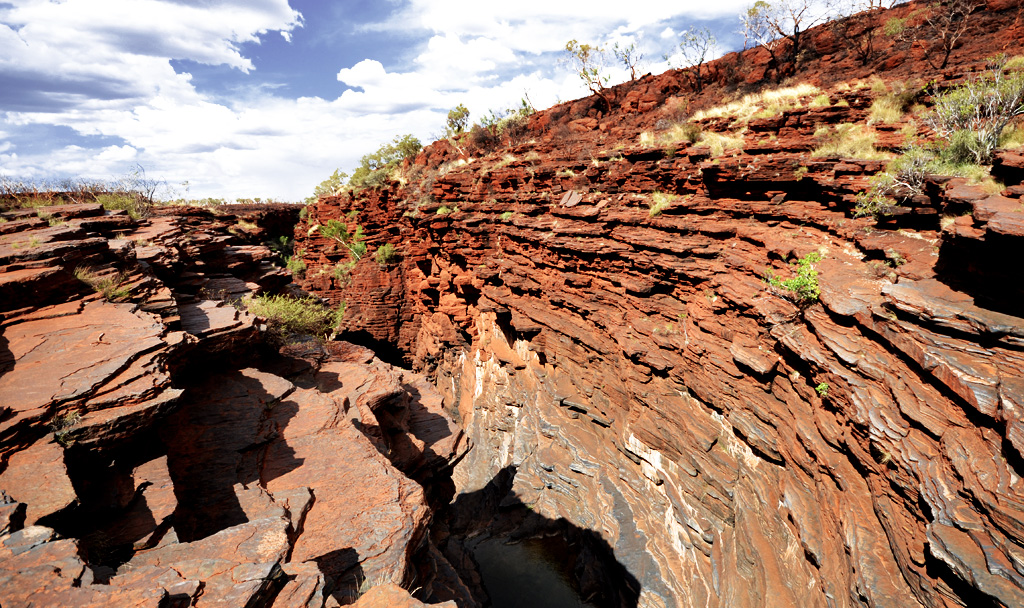 Swimming hole in Karijini National Park
Swimming hole in Karijini National Park
Karijini National Park
One of the most important tips for this destination that I can't emphasize enough is to bring along enough water. You won't find any drinking water here, similar to the national parks you'll find up in the Northern Territory. And you'll want that water because two things: 1) It'll be hot. 2) You won't want to leave.
This is a great place to get a taste of canyoneering. If you're unfamiliar with canyoneering, it involves climbing, meandering through canyon walls, crossing pools of water, jumping off small cliffs into large pools of water. It's really a lot of fun. If you don't have any friends with a GoPro, then I suggest you making one.
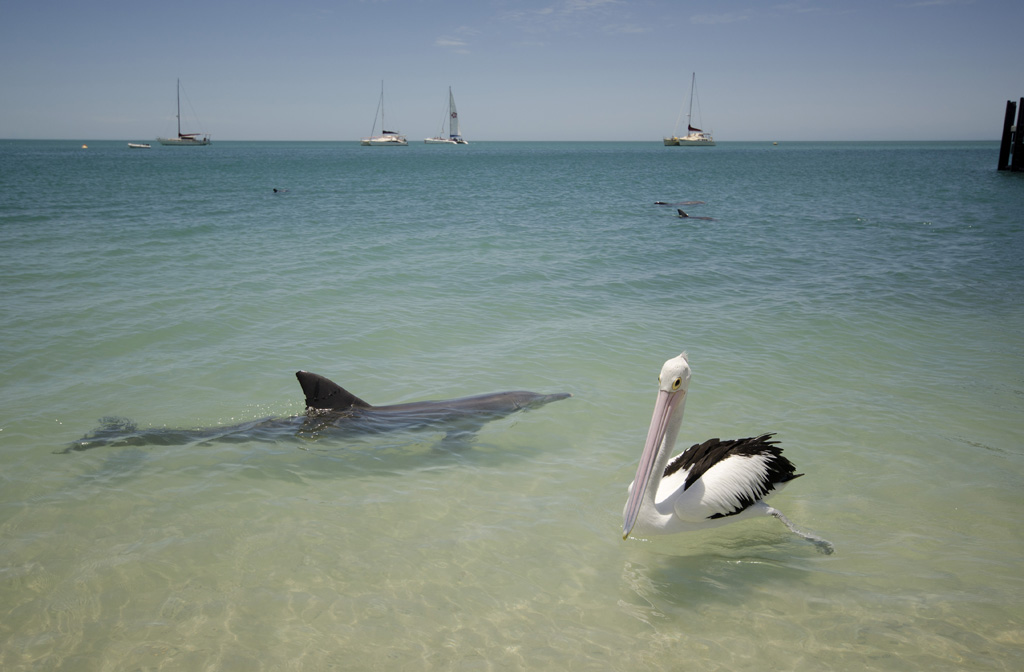 Dolphin approaching shore at Monkey Mia
Dolphin approaching shore at Monkey Mia
Shark Bay / Francois Peron National Park
This peninsula is famous for Monkey Mia, a small resort area where dolphins regularly come right up to the shore every day to be fed fish by park rangers. Having spent a large part of my life in Los Angeles, I've had a lot of encounters with dolphins out on the Pacific, but it was still a very cool experience to see them come that close to shore. It certainly is an interesting sight, but I can't help but wonder how ethical it all is. I mean, technically the dolphins are free to come and go as they like. But really, what creature as intelligent as a dolphin is going to ever say no to a free lunch?
For me personally, the highlight of the peninsula was by no means Monkey Mia. I would recommend that if you have a 4WD, it's really worth it to ride up to Francois Peron National Park. By the time you get to this area of Western Australia, you probably already saw countless pristine beaches and wonder whether or not it's worth it time-wise to make the extra detour. Let me tell you, it is. The roads are very sandy and there is no infrastructure, which is great because there's a good chance you won't run into a lot of other people. Just make sure to stock up on water abundantly. Similar to Karijini before it, my group also ended up leaving early for reasons of water.
Kayaking is another great activity to do on the peninsula. If you don't have your own, there are a few locals that rent them out near the town of Denham. Going by kayak is really a great way to explore and get a different perspective of the coastline. The area near Denham is particularly interesting due to the huge sea grass forests below the surface. Not so great for snorkeling, but if you're lucky you might come across a dugong. Luck was on my side the day I went out. Seeing a dugong in the wild is something I'll never forget. They are such beautiful creatures, and surprisingly fast too! I couldn't believe how fast those things can swim.
I feel so fortunate to have been able to experience nature in such an incredible way during my travels in Western Australia. Experiencing the wildlife and landscapes in the way I did, I can't help but realise how we as humans have done so much environmental damage to other parts of the world. As much as I wish the amazing experiences I had for everyone, I'll admit there is a part of me that wishes this corner of the world would forever stay a secret. Unfortunately, you can see a lot of changes already taking place. My biggest fear is that I'll return one day to find a place I don't recognize.


